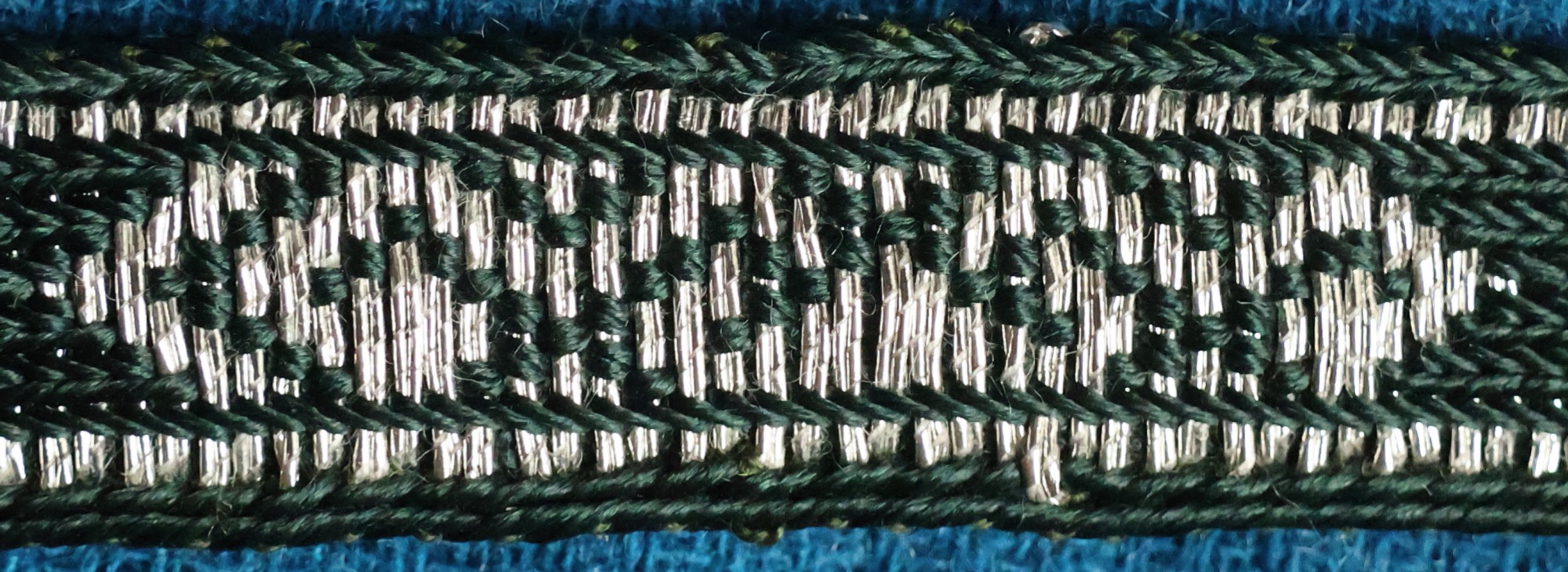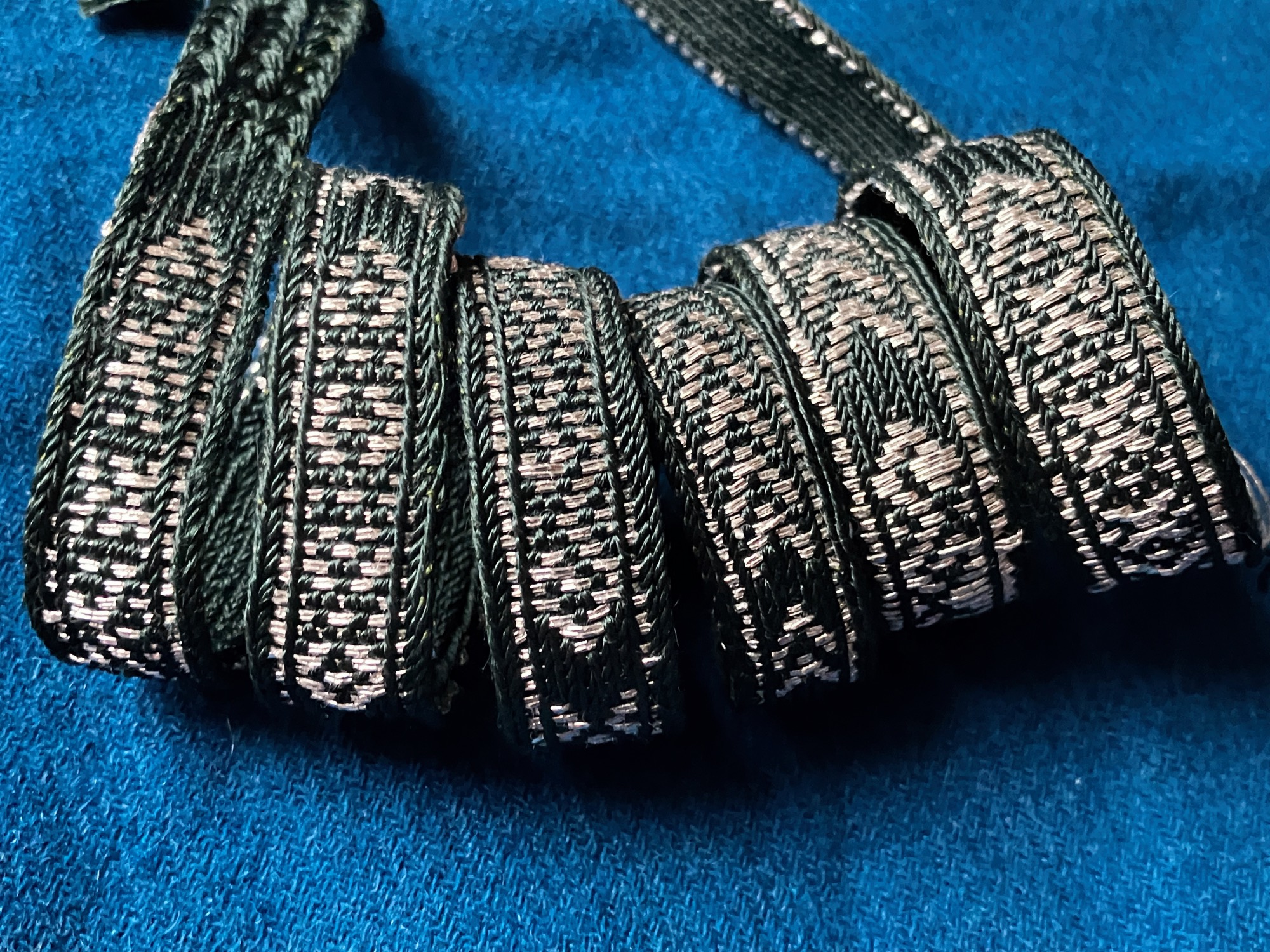Die brettchengewebten Borte von Gnezdovo /Rus

Die ursprünglich goldbroschierte Borte stammt aus dem Grabhügel Hügel POl-62.
Es wurden 10 Fragmente gefunden, die an eine Stoffkannte genäht waren. Das größte Fragment war 17,5 x 7 cm groß.
Der Grabhügel wird in die 2. Hälfte des 10. Jahrhunderts datiert.
The original gold brocaded band comes from burial mound POl-62.
10 fragments were found sewn to the edge of a piece of fabric. The largest fragment measured 17.5 x 7 cm.
The burial mound is dated to the 2nd half of the 10th century.

Da die Kettfäden vom Rand nicht erhalten sind, habe ich mich entschieden, die Borte mit 19 Brettchen anstelle von 17 Brettchen zu weben, damit ich am Rand ein Brettchen habe, das nicht broschiert wird. Es gibt dafür im historischen Kontext genügend Funde, wo genau so gewebt wurde. Die erhaltenen Fragmente sind insgesamt über 500 Musterzeilen lang. Ich habe sie ein wenig angepasst, damit man fließende Übergänge zu den einzlnen Teilen hat.
Die Kettfäden der Randbrettchen wurden mit einer pflanzlichen Faser gewebt, in der Mitte wurde Seide gefunden. Ich habe komplett mit Seide gearbeitet.
Meine Nachwebung ist jetzt 1,4 cm breit, das Original ist 0,8 cm breit.
As the warp threads from the edge are not preserved, I decided to weave the band with 19 tablets instead of 17, so that I have a tablet at the edge that is not brocaded. There are enough finds in the historical context where this is exactly how it was woven. The preserved fragments are over 500 sample lines long in total. I have adapted them a little so that there are smooth transitions to the individual parts.
The warp threads of the edge boards were woven with a vegetable fibre, and silk was found in the middle. I worked entirely with silk.
My reweaving is now 1.4 cm wide, the original is 0.8 cm wide.
Literatur:
O. Оrfinskaya Textile of the Gnezdovo complex. Орфинская О.В. Текстиль Гнёздовского комплекса, 2018
